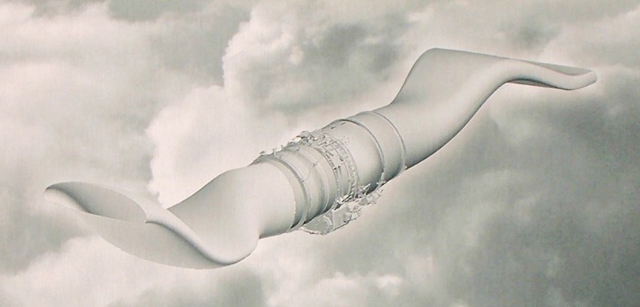Pratt & Whitney expects to test a new adaptive fan design for its version of the US Air Force Research Laboratory's (AFRL) adaptive engine technology development (AETD) variable cycle engine programme within the next 30 days, a top company official says.
"Our AETD configuration features an adaptive fan," says Bennett Croswell, president of P&W military engines. "It's a three-stream fan and our initial test of that piece is coming up in about a month."
The adaptive fan rig will be tested at the company's compressor research facility in Dayton, Ohio, Croswell says. That fan design will eventually be mated to an advanced engine core design which the company is currently working on.
 |
|---|
Dave Majumdar/Flightglobal |
Pratt & Whitney's AETD engine core is roughly the same configuration as that found in the company's existing F135 engine, but it has more stages.
The company plans to run an adaptive core rig test in 2015, Croswell says. Subsequently, P&W will run a full engine test in 2016, which Croswell says is a unique feature of his company's AETD development effort.
P&W's AETD core will be a very high pressure ratio design with very high thermal efficiency, Croswell says. The AETD design must attain those high pressure ratios in order to gain high thermal and propulsive efficiency. To achieve some of the required performance, Pratt & Whitney will need to use advanced metallurgy and ceramic matrix composites (CMC). But, Croswell says, P&W is "less bullish" on CMCs than some of their competitors and is more focused on advanced nickel alloys.
But while P&W's design will achieve extremely high pressure ratios for a combat aircraft engine, those ratios will not be as high as those found on airliner engines. "The challenge there has always been the temperature of the compressor exit," Croswell says.
The air extracted from the compressor is used to cool the turbine section, Croswell explains. In P&W's AETD design, "we use the third stream to help us cool the cooling air," he says. "So we have some innovative approaches as to how we use that third steam to provide a heat-sink." Croswell says that the reduced temperature air is used to cool the back of the compressor and parts of the turbine-which reduces the overall amount of turbine cooling air needed by the engine. "The less [air] you use, the more efficient your cycle," Croswell says.
While the main advantage of a variable cycle engine is the ability to change bypass ratios depending on the speed of the aircraft, it offers other advantages at high speeds, Croswell says. "At high speeds it allows you to reduce boat-tail drag," he says. In a conventional engine design, excess air entering the inlet spills over the brim of the engine nacelle creating drag, but an adaptive fan's third stream allows a variable cycle design to channel that excess airflow out through the engine-thus avoiding the spillage drag.
When the P&W runs its full engine test in 2016, the third stream will also be used to cool the engine's afterburner nozzle-which will be derived from the F135. But, Croswell says, the company is focusing less effort on the afterburner than the fan and turbine sections.
Source: Flight International
















